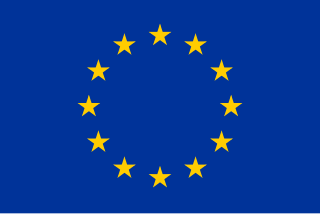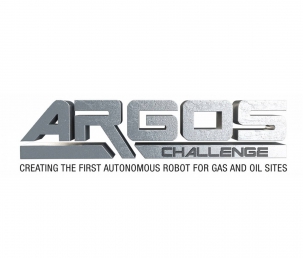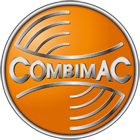Related Research Articles

TotalEnergies SE is a French multinational integrated energy and petroleum company founded in 1924 and is one of the seven supermajor oil companies. Its businesses cover the entire oil and gas chain, from crude oil and natural gas exploration and production to power generation, transportation, refining, petroleum product marketing, and international crude oil and product trading. TotalEnergies is also a large-scale chemicals manufacturer.

Kenwood is a Japanese brand for consumer electronics. Since October 2011, Kenwood has been owned by JVCKenwood as a result of a merger between Kenwood Corporation and JVC. Kenwood manufactures audio equipment such as AM/FM stereo receivers, cassette tape decks/recorders, amateur radio (ham) equipment, radios, cellular phones, speakers, and other consumer electronics.

Eni S.p.A., acronym for and formerly legally known as Ente nazionale idrocarburi, is an Italian multinational energy company headquartered in Rome. It is considered one of the "supermajor" oil companies in the world, with a market capitalization of €50 billion, as of 31 December 2023. The Italian government owns a 30.5% golden share in the company, 1.99% held through the Ministry of Economy and Finance and 28.5% through the Cassa Depositi e Prestiti. The company is a component of the Euro Stoxx 50 stock market index.

Intrinsic safety (IS) is a protection technique for safe operation of electrical equipment in hazardous areas by limiting the energy, electrical and thermal, available for ignition. In signal and control circuits that can operate with low currents and voltages, the intrinsic safety approach simplifies circuits and reduces installation cost over other protection methods. Areas with dangerous concentrations of flammable gases or dust are found in applications such as petrochemical refineries and mines. As a discipline, it is an application of inherent safety in instrumentation. High-power circuits such as electric motors or lighting cannot use intrinsic safety methods for protection.

The Abu Dhabi National Oil Company, known by its acronym ADNOC, is the state-owned oil company of the United Arab Emirates (UAE).
Angola LNG is a liquid natural gas (LNG) facility in Soyo, Angola.

Fugro NV is a Dutch multinational public company headquartered in Leidschendam, Netherlands. The company is primarily a service company focused on geotechnical, survey and geoscience services, and is listed on Euronext Amsterdam. Mark Heine is Fugro's CEO and Chairman of the Board of Management, while Harrie L.J. Noy is Chairman of the Supervisory Board.

CETO is a wave-energy technology that converts kinetic energy from ocean swell into electrical power and directly desalinates freshwater through reverse osmosis. The technology was developed and tested onshore and offshore in Fremantle, Western Australia. In early 2015 a CETO 5 production installation was commissioned and connected to the grid. As of January 2016 all the electricity generated is being purchased to contribute towards the power requirements of HMAS Stirling naval base at Garden Island, Western Australia. Some of the energy will also be used directly to desalinate water.

China is the world's leader in electricity production from renewable energy sources, with over triple the generation of the second-ranking country, the United States. China's renewable energy sector is growing faster than its fossil fuels and nuclear power capacity, and is expected to contribute 43% of global renewable capacity growth. China's total renewable energy capacity exceeded 1,000 GW in 2021, accounting for 43.5 per cent of the country's total power generation capacity, 10.2 percentage points higher than in 2015. The country aims to have 80 per cent of its total energy mix come from non-fossil fuel sources by 2060, and achieve a combined 1,200 GW of solar and wind capacity by 2030. In 2023, it was reported that China was on track to reach 1,371 gigawatts of wind and solar by 2025, five years ahead of target due to new renewables installations breaking records. In 2024, it was reported that China would reach its target by the end of July 2024, six years ahead of target.

Sakhalin Energy Investment Company Ltd. is a consortium for developing the Sakhalin-2 oil and gas project with corporate head office in Yuzhno-Sakhalinsk. Roman Dashkov has been the Chief Executive Officer since 2013.

The energy sector of Ohio consists of thousands of companies and cities representing the oil, natural gas, coal, solar, wind energy, fuel cell, biofuel, geothermal, hydroelectric, and other related industries. Oil and natural gas accounts for $3.1 billion annually in sales while ethanol generates $750 million. Toledo is a national hub in solar cell manufacturing, and the state has significant production of fuel cells. In 2008, the state led the country in alternative energy manufacturing according to Site Selection Magazine, while the natural gas industry has experienced growth due to the expansion of shale gas.

Energy in Singapore is critically influenced by its strategic position in maritime Southeast Asia, nestled between Malaysia and the Singapore Strait, near essential maritime routes like the Straits of Malacca and the South China Sea. This location has established Singapore as a central hub for the global petroleum, petrochemical, and chemical industries, with Jurong Island serving as a key base for over 100 international companies in these sectors. The majority of Singapore's energy consumption is derived from petroleum and other liquids, accounting for 86% of its total energy use, while natural gas represents 13%, and coal and renewable resources make up the remaining 1%.
Norther is an offshore wind farm in the Belgian North Sea, within the Exclusive Economic Zone of Belgium, approximately 23 kilometres from the Belgian port of Ostend. The concession was granted at the end of 2009, which is when the actual development of the project began.
Taurob tracker is a mobile robot, manufactured by Taurob GmbH in Austria. It has been originally developed as a remote controlled reconnaissance platform for fire departments. but is currently used also by the military, civil-defense units, universities and the oil and gas industry around the world.

The ARGOS Challenge was a robotic competition sponsored by Total between 2013 and 2017 and co-organized with Agence nationale de la recherche. The acronym ARGOS stands for Autonomous Robot for Gas and Oil Sites.
Taurob is an Austrian robotics company best known for its Taurob Tracker and Taurob Inspector robots and for winning Total Energies' ARGOS Challenge in 2017.

COMBIMAC is a manufacturer of special electric motors and centrifugal fans located in Emmen, Netherlands.

Seeker is a NASA CubeSat intended to demonstrate ultra-low cost in-space inspection capability. Taken from design to delivery from late 2017 to early 2019, Seeker was launched on board the Cygnus NG-11 mission. Seeker deployed and operated around Cygnus on September 16, 2019.
Oskar von Stryk is professor of simulation, system optimization and robotics at the department of computer science of the Technische Universität Darmstadt. He is known for his research on robotics.

Vineyard Wind 1 is an offshore wind farm under construction in U.S. federal waters in the Atlantic Ocean in Bureau of Ocean Energy Management-designated Lease Area OCS-A 0520, about 13 nautical miles south of Martha's Vineyard and Nantucket, Massachusetts. The array is designed to include 62 Haliade-X wind turbines manufactured by GE Offshore Wind with a nameplate capacity of 804 MW combined, equivalent to the annual power use of 400,000 homes. The Massachusetts Department of Public Utilities approved the project in 2019. Construction began on November 18, 2021. In October 2023, the first turbine was installed. Power from the first turbine started flowing into the ISO New England grid on January 2, 2024. Construction is expected to be complete by the end of 2024.
References
- ↑ "ROBOTICS: Meet Your New Offshore Robotic Co-workers; Charles, Eddie, ANYmal & Spot". Offshore Engineer. 3 August 2021. Retrieved 22 October 2021.
- ↑ "DIETSMANN INCREASES STAKE IN ROBOTICS SPECIALIST TAUROB". Dietsmann NV. Retrieved 22 October 2021.